In the capital of Azerbaijan, the past meets the future face to face. The modern architecture of the city is not inferior in beauty to the historical buildings of the Icheri Sheher region and has great cultural value. Flame towers compete in expressiveness with the ancient Maiden's Tower. The magnificent forms of the Shirvanshahs' palace somewhere even lose out in pomp and luxury of the newly built Bibi-Heybat mosque.
Today, Baku enjoys all the benefits of generous financial flows from oil and gas production, as well as the rich historical heritage that the city inherited from the previous centuries full of bright events. The city's tourism industry is developing very rapidly, as new cultural facilities are constantly being built in Baku and interesting places for guests of the republic appear.
What to see and where to go in Baku?
The most interesting and beautiful places for walking. Photos and a short description.
- Heydar Aliyev Center
- Old city of Icheri Sheher
- Baku Seaside Boulevard
- Flame towers
- Maiden's Tower
- Palace of the Shirvanshahs
- Bibi Heybat Mosque
- Tezepir Mosque
- Juma Mosque
- Heydar Mosque
- Azerbaijan Carpet Museum
- Museum of Azerbaijani Literature
- National Museum of Arts of Azerbaijan
- National Museum of the History of Azerbaijan
- Modern Art Museum
- Baku Museum of Miniature Books
- Russian Drama Theatre. Samad Vurgun
- Opera and Ballet Theater named after M. F. Akhundov
- Mukhtarov's Palace
- National Flag Square
- Baku Olympic Stadium
- Upland park
- Alley of martyrs
- Khagani garden
- Fountain Square
Heydar Aliyev Center
The cultural center, located on the avenue of the same name, which was built by the Turkish construction holding according to the project of the famous architect Zaha Hahid. The complex is multifunctional and includes spacious conference rooms, a museum, offices and exhibition galleries. The Heydar Aliyev Center was erected for the purpose of studying the cultural values, language, history and traditions of the Azerbaijani nation.
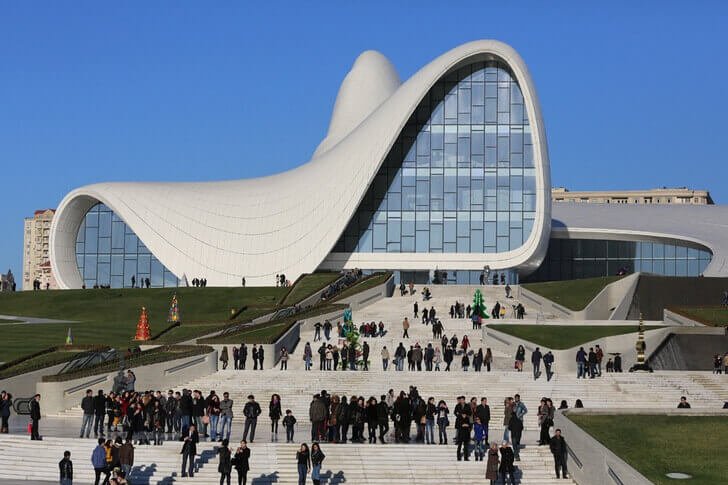
Old city of Icheri Sheher
An old residential quarter, surrounded by a powerful fortress wall. Icheri Sheher is a national historical monument of great cultural value. People have lived in this place since the Bronze Age. During the Early Middle Ages, there was already a fairly dense residential area. In the 17th - early 19th centuries, Icheri Sheher was the capital of the Baku Khanate.
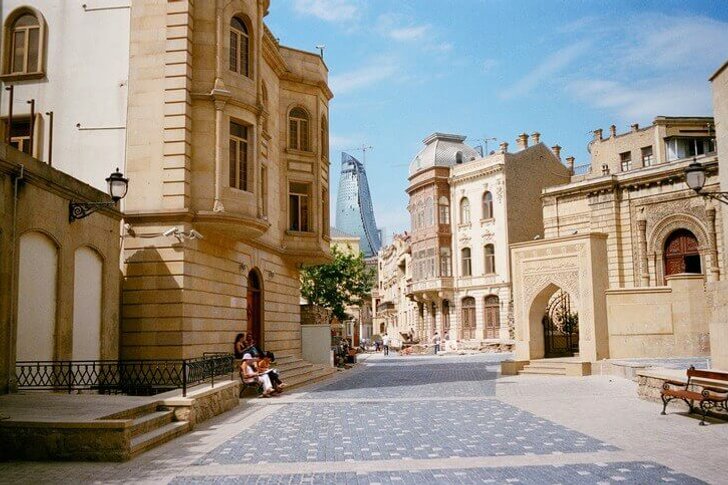
Baku Seaside Boulevard
The boulevard was founded at the beginning of the 20th century at the initiative of the city authorities. As part of the work on the arrangement of the future avenue and the park, the embankment was ennobled, trees were planted and infrastructure elements were built. Twice a significant part of the boulevard was flooded due to the rise in the level of the Caspian Sea. In the 2000s a musical fountain, a theater, a cinema were built in the park and attractions were restored. The last renovation took place in 2015.
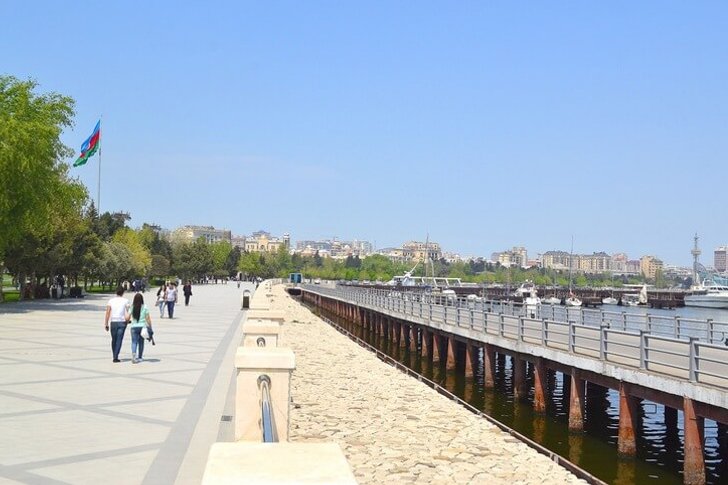
flame towers
Three skyscrapers, towering in the modern central part of Baku, which are made in the form of flames. The grandiose evening illumination creates the effect of giant torches directed to the sky. The lighting design of the Flame Towers is recognized as the best in the world. The construction of the facilities was completed in 2012. The interior space is occupied by a hotel, residential apartments and commercial premises.
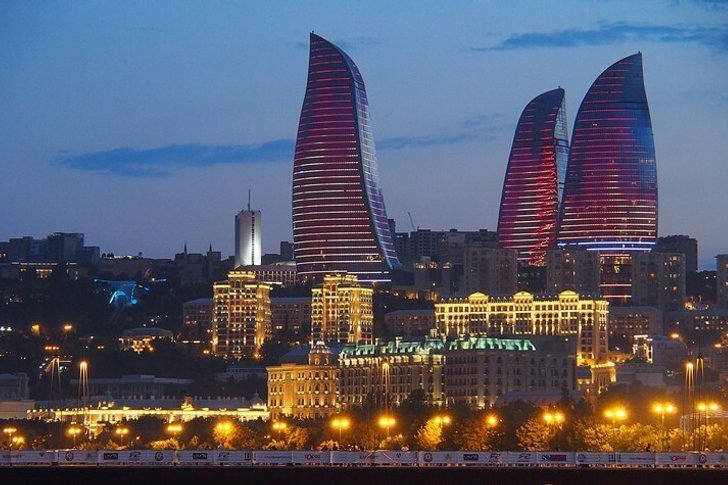
Maiden's Tower
The exact time of construction of the structure is unknown. It is believed that it could have been erected during the reign of the Sassanid dynasty in the 3rd-7th centuries. or even earlier. In the XII century, it entered the defensive system of the Baku fortress. With the original purpose, too, not everything is clear. Perhaps it was a ritual building of the followers of Zoroastrianism. In 2000, the tower was included in the UNESCO list.

Palace of the Shirvanshahs
The palace complex of the XIII-XVI centuries, built in the Shirvan-Absheron architectural style. The residence of the Shirvanshahs was located on the territory of the palace at a time when Baku was the capital of Shirvan. The complex includes a mosque of the 15th century, a royal tomb, Divan-Khane, a bathhouse and a mausoleum of the medieval scientist and thinker S. Ya. Jalaleddin Bakuvi. Despite the fact that the buildings of the ensemble were erected at different times, it looks quite harmonious.
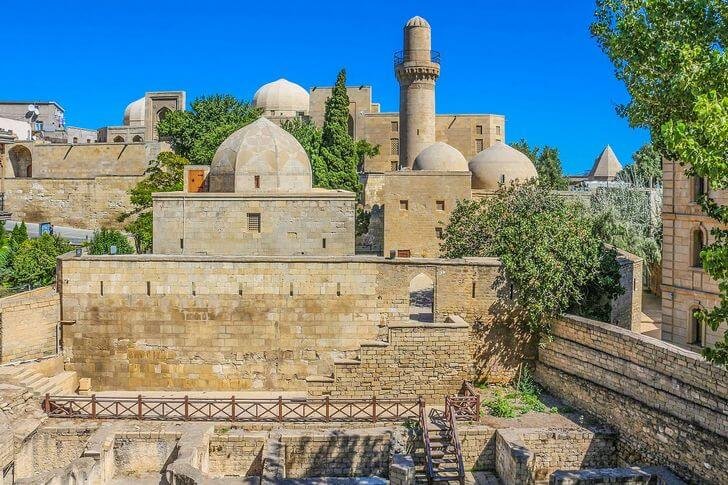
Bibi Heybat Mosque
The temple was built in 1998-99. on the site of a historic 12th-century mosque that was blown up as part of a government program to eradicate religion in the 1930s. It is believed that the first building was erected according to the design of the architect Mahmud ibn Saad. The new building was built in full accordance with the canons of the Shirvan architectural school. For this, photographs of the beginning of the 20th century, old plans and other historical documents were widely used.

Tezepir Mosque
Temple of the beginning of the 20th century, built according to the project of Z. Akhmedbekov at the expense of the local philanthropist N. Ashurbekova. After 1917, the mosque was closed, and until 1943 the building was used for other purposes. He managed to avoid the sad fate of the Bibi-Heybat mosque. The inscriptions on the outer facade of the building are made of gold; valuable mahogany was used to make window openings and doors.
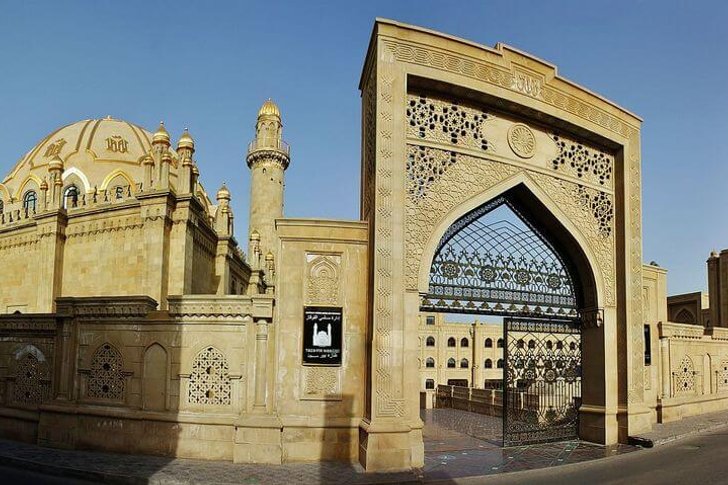
Juma Mosque
The mosque is located within the historical quarter of Icheri Sheher. Some researchers believe that in the pre-Islamic era, a pagan fire sanctuary was located on the site of the temple. The first building was erected at the beginning of the 14th century. After its destruction in the 17th century, the mosque was rebuilt. The second building existed until the 20th century, then it was destroyed by fire. The construction of the beginning of the 20th century has come down to us.
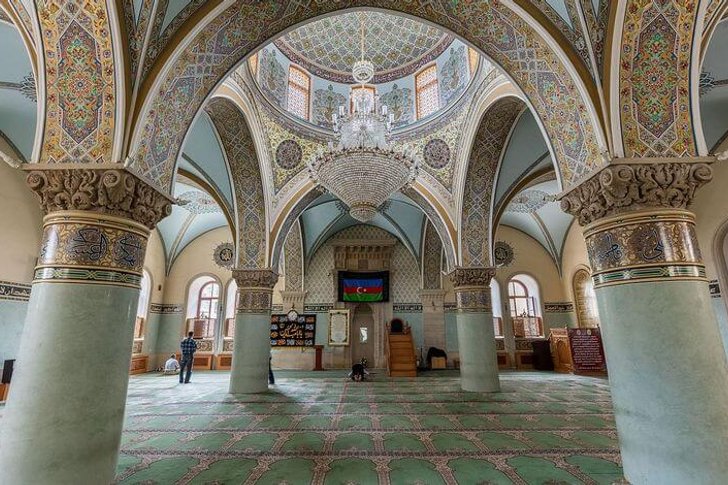
Heydar Mosque
The modern temple, built in 2012-14. by decree of President I. Aliyev. Its opening took place in 2015. The head of Azerbaijan wished that the mosque be named after his father Heydar Aliyev, a charismatic and revered leader who made an invaluable contribution to the development of statehood and national identity. The building was built in the traditional Shirvan-Absheron style.
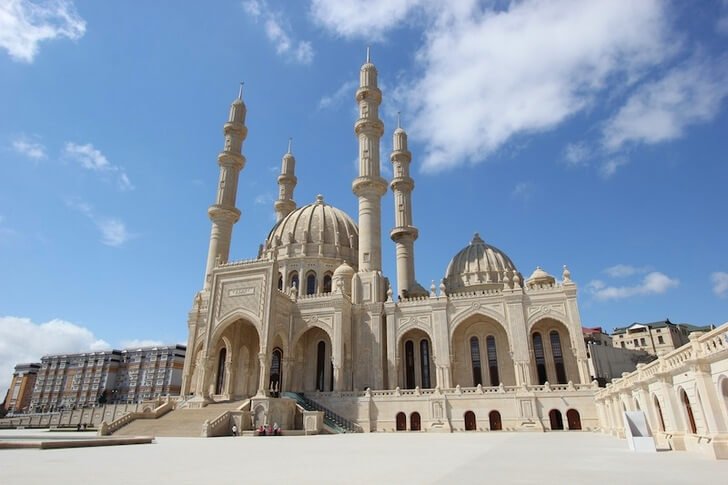
Azerbaijan Carpet Museum
The museum was founded in 1967. At first, the exposition was located on the territory of the Juma mosque. In 2014, a new building was built for the extensive collection. The exposition includes about 14,000 carpets, national clothes, jewelry, chased utensils and other objects of applied art. The museum plays an important role in the study of the history of the carpet. His team has repeatedly participated in international symposiums.
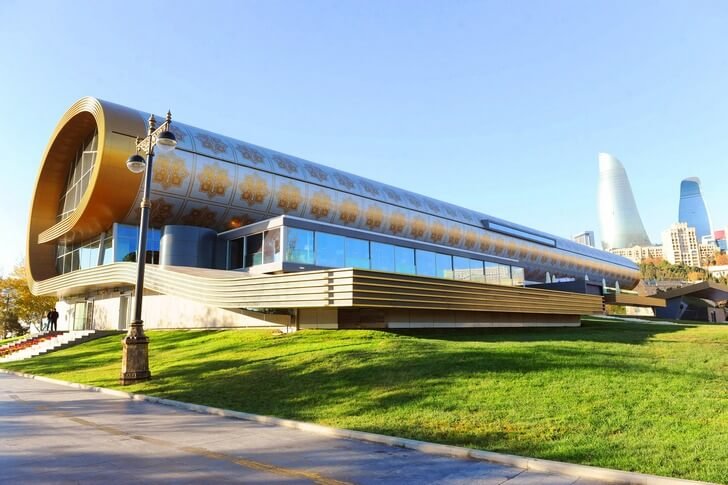
Museum of Azerbaijani Literature
The museum is an important cultural center of Azerbaijan. It contains the world's largest collection of Azerbaijani literature and carries out serious scientific activity. It was founded in 1939, but the first visitors were able to get here only in May 1945, immediately after the end of the Great Patriotic War. The museum is housed in a 19th-century mansion that underwent major restoration in the 1960s.

National Museum of Arts of Azerbaijan
The gallery exhibits an extensive collection of works by Azerbaijani, Russian and European artists, housed in separate themed rooms. The total number of exhibits is more than 17 thousand. In addition to paintings, the funds contain jewelry, textiles, dishes, carpets, sculptures and other artifacts. The museum was founded in 1936 on the territory of a picturesque mansion of the 19th century.
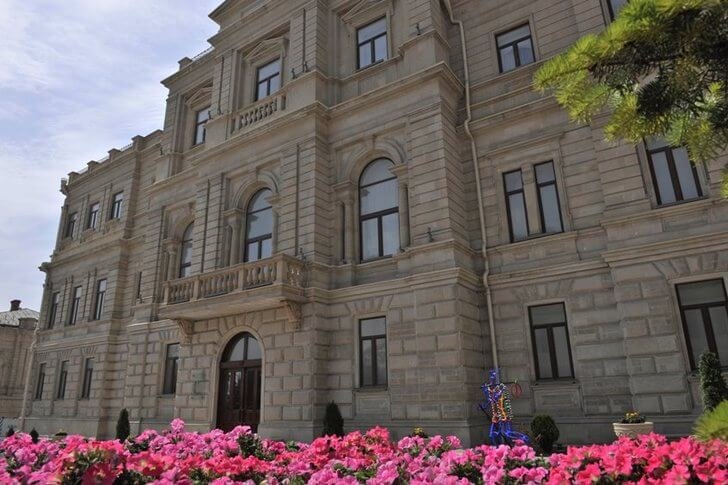
National Museum of the History of Azerbaijan
The collection is located on an area of about 2 thousand m² and has about 120 thousand items, of which 20 thousand are constantly exhibited. The rest of the exhibits are stored in museum funds. The collection covers a wide period of the history of the eastern part of the Caucasus, including the rise and fall of kingdoms, the advent of various religions, the origins of traditions and other educational sections. The museum was opened in 1920.
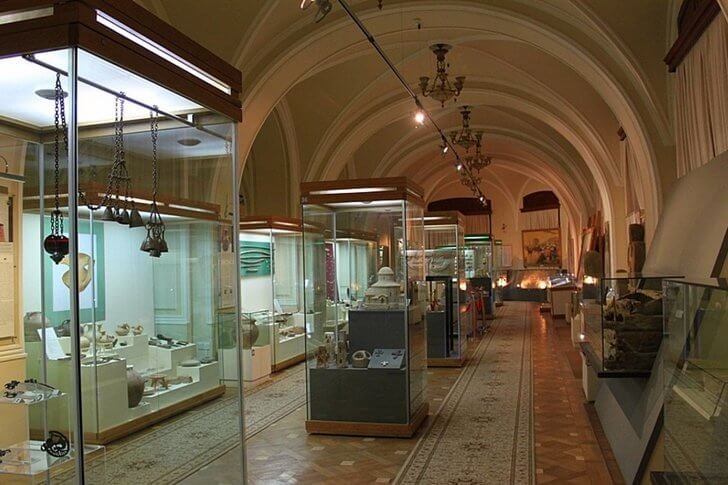
Modern Art Museum
The gallery contains works by masters who worked in the XX-XXI centuries. About 800 paintings are exhibited here, as well as many photographs, sculptures and various installations. The museum provides an excellent opportunity to get acquainted with the works of contemporary Azerbaijani artists - E. Shakhtakhtinskaya, O. Eldarov, S. Bahlulzade, T. Salahov and many others. There is also a section with works by Western European masters.
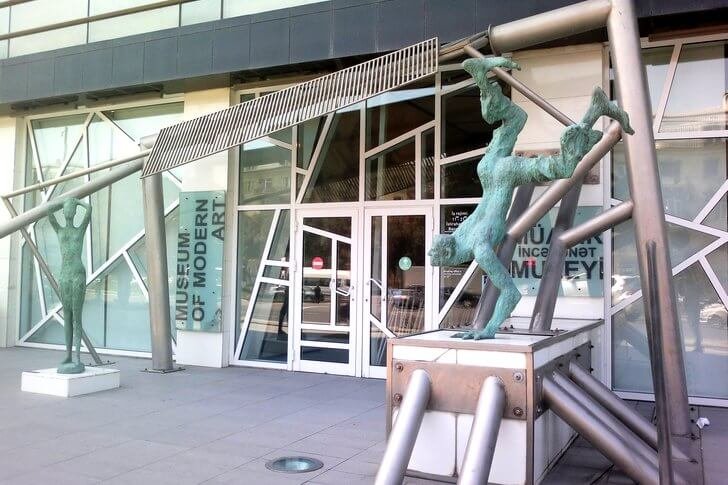
Baku Museum of Miniature Books
The collection is located on the territory of the Icheri Sheher quarter. The museum has existed since 2002. Its collection is made up of exhibits from a private collection of books owned by Z. Salakhova, the sister of the contemporary artist T. Salakhova. For 30 years, she has collected more than 6.5 thousand books from 64 countries of the world. The museum funds contain quite rare editions of famous classics, released in a limited edition.
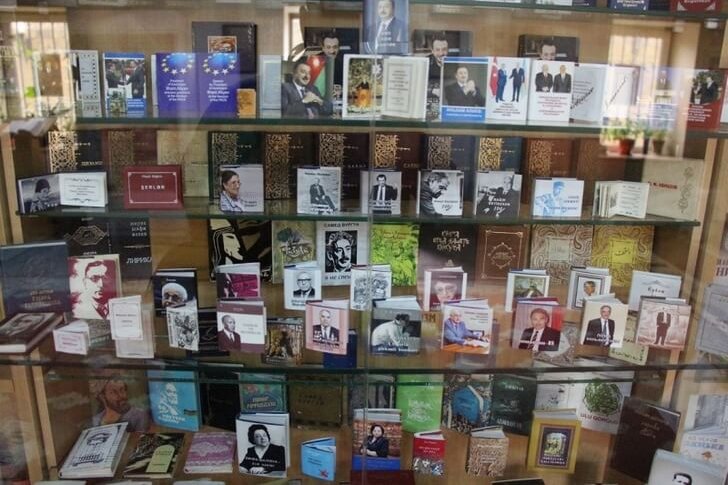
Russian Drama Theatre. Samad Vurgun
The State Theater of Azerbaijan, founded in 1920. Over the past time, the stage has changed several names until it received a name in honor of the national poet S. Vurgun. The repertoire of the theater has always been composed of the best works of Russian and foreign classics, as well as the works of Azerbaijani authors. In 2006-2008 the building was completely refurbished. Every year the repertoire is updated, the poster includes 6-8 new performances.
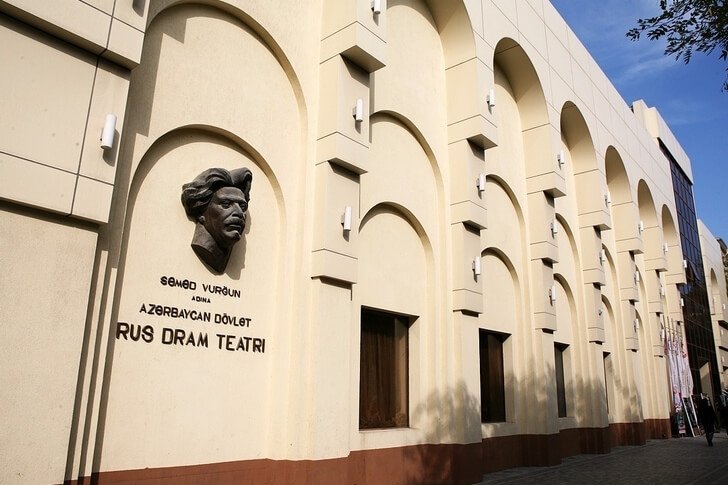
Opera and Ballet Theater named after M. F. Akhundov
The scene has existed since the beginning of the 20th century. Residents of the city call the theater "Baku Opera". F. Chaliapin, M. Plisetskaya, E. Obraztsova, M. Caballe, V. Gordeev and other stars of the ballet and opera stage performed here in their time. The theater building was erected at the expense of the Mailov brothers. M. Mussorgsky's opera "Boris Godunov" was chosen as the premiere production. The modern repertoire consists of immortal classical works.
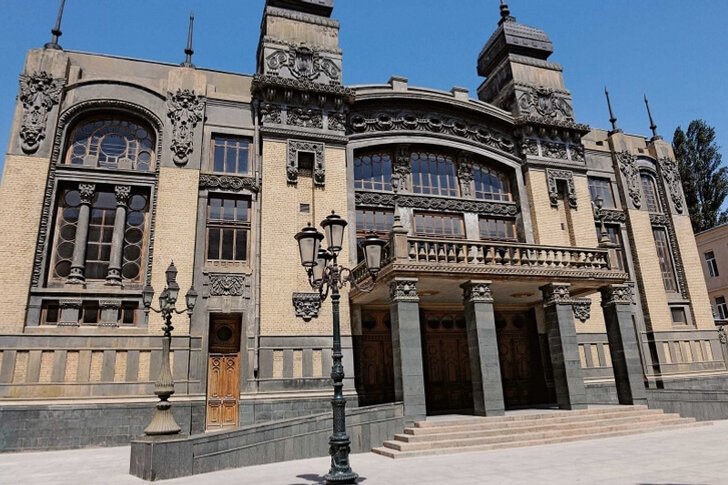
Mukhtarov's Palace
An architectural monument of the beginning of the 20th century, built at the expense of the industrialist M. Mukhtarov according to the project of I. Ploshko. The magnate decided to build the palace after traveling around Europe with his wife Lisa, who was impressed by the magnificent Venetian palazzos. The architecture of the building is a mixture of elegant French Gothic and luxurious Italian Baroque.
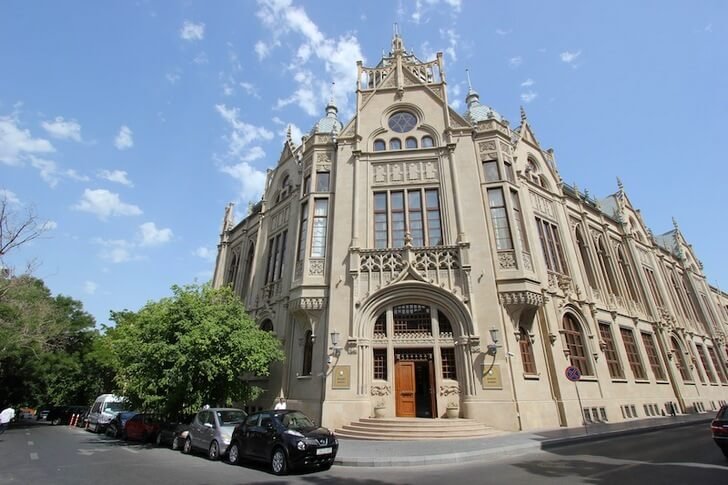
National Flag Square
The square adorned the capital of Azerbaijan in 2010. It was founded by the decree of President I. Aliyev. The project was developed by an American architectural company in collaboration with an Azerbaijani firm. The area covers an area of 60 hectares. In the middle is a 162-meter spire crowned with a national flag of gigantic size (length - 70 meters, width - 35 meters, weight - about 350 kg).
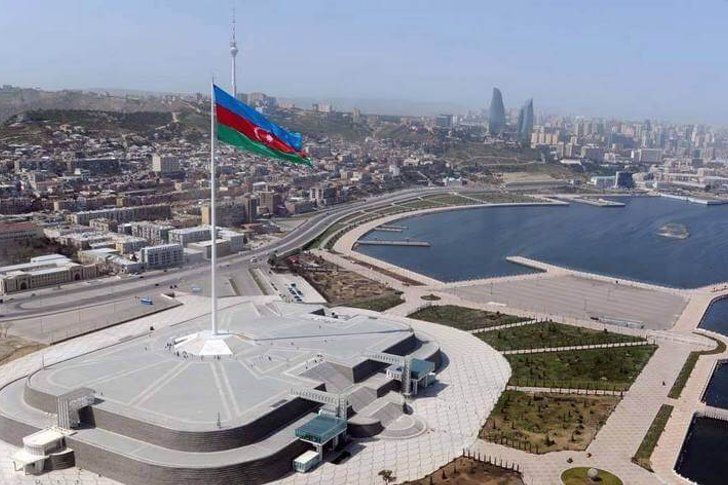
Baku Olympic Stadium
The stadium opened in 2015. According to the UEFA classification, it belongs to the 4th category. The opening/closing ceremonies of the 1st European Games, as well as some athletics competitions, were held on its territory. It is also planned to host matches of the European Football Championship 2020 here. The arena is multi-sport, that is, adapted for various types of competitions. It is designed for 69,870 spectators.
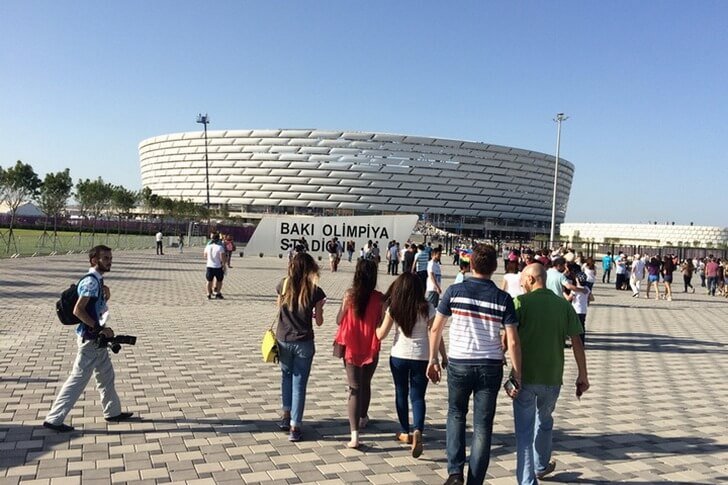
upland park
City park built in the 1930s. Throughout the Soviet period in the history of Azerbaijan, it was very popular among the residents of the capital. In the 1990s on the territory of the park were buried people who died during the events of Black January. It has since been declared a memorial. There is an observation deck in the park, which can be reached by the city funicular.

Alley of martyrs
The alley is located on the territory of Nagorny Park. It is a mass grave where the victims of the events of January 1990 are buried, as well as people who died during the beginning of the Nagorno-Karabakh conflict. Previously, there was a Muslim cemetery here. In the course of the funeral, a tombstone of the “Shahida of 1918” was discovered. The bodies found in old burials were re-buried in a mass grave.
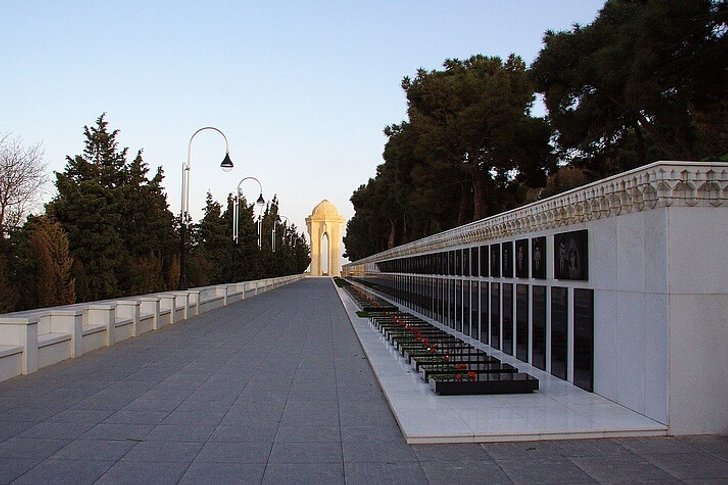
Khagani garden
One of the oldest parks in Baku, which was laid out in the second half of the 19th century. Since then, it has been reconstructed and changed its name more than once. The square is named after the poet Khagani. The garden is located on a small area of 0.8 ha. In its central part there is a pool and the sculpture "Three Graces". Park alleys are designed in such a way that they lead to the central sculptural composition.

Fountain Square
One of the first squares in Baku, the architectural appearance of which took shape by the middle of the 19th century. The place is surrounded by green alleys and urban monuments of the 19th-20th centuries: the Grand Hotel, an old cinema, museums and an Armenian temple. In the center is a fountain with an original sculptural group. In 2010, the square was reconstructed, as a result of which the area acquired a more modern look.
